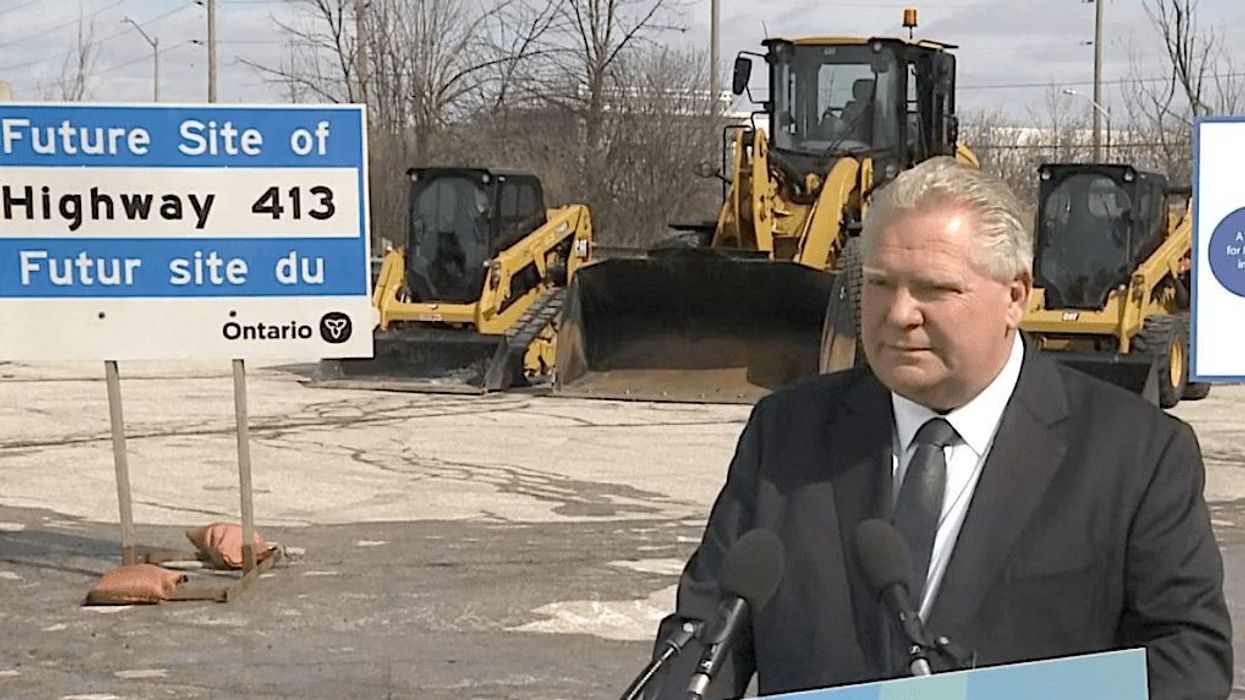The Government of Ontario is officially moving ahead with the construction of Highway 413 and the Bradford Bypass, publicly releasing its newest transportation plan on Thursday.
The two infrastructure projects have been in the works for years amid mixed public reception and criticism. But the Ontario government has pushed forward, citing the projects as a means to relieve gridlock and meet the needs of Ontario's growing population.
“Our government is saying ‘yes’ to building the roads, highways and public transit needed to unlock our full economic potential and keep our province moving forward,” said Premier Doug Ford. “As we attract more skilled workers to Ontario, we need to build more roads and highways to keep up with population growth. Highway 413 and the Bradford Bypass are a critical part of our plan to build Ontario as we connect communities, reduce gridlock and get goods to market sooner.”
The announcement of the latest infrastructure plan, entitled "Connecting the GGH: A Transportation Plan for the Greater Golden Horseshoe," comes just 12 weeks before the provincial election. Ford committed to spending $82B over the next decade on several transportation projects, including the two highway projects, expanded passenger rail service, new subway lines, and expansions of several existing highways.
“Our government is building roads, highways and transit to connect communities, fight gridlock and keep goods and people moving across the province, including in Ontario’s economic engine, the Greater Golden Horseshoe,” said Minister of Transportation Caroline Mulroney. “No matter how you choose to move, we are building all forms of transportation infrastructure to help you get to where you need to go more safely, quickly, and conveniently. Our bold vision will create jobs, boost Ontario’s competitiveness and meet the demands of people in this rapidly growing region.”
According to the province, population in the Greater Holden Horseshoe region is expected to grow from 10M to 14.9M by 2051.
The proposed Highway 413 would run 59 km from Highway 400 in Vaughan to the intersection of Highways 407 and 401 at the Brampton/Mississauga border, also connecting along the way to Highways 427 and 410. By 2031, the four- to six-lane highway is expected to service more than 300,000 commutes each day, the provincial plan says, while cutting commute times by up to 30 minutes. Some experts have disagreed with this estimate, saying that congestion will continue to persist as the number of cars continues to grow.
Although smaller in scale, the 16.2-km Bradford Bypass would provide another highway-to-highway connection, joining Highways 400 and 404. The province estimates that both motorists and trucks will cut down travel time by more than 60%, saving up to 35 minutes.
"Simcoe County is expected to experience rapid population growth over the next 10 years, and York Region will grow to 1.79 million residents by 2041," the provincial plan reads. "The Bradford Bypass would relieve gridlock on existing east-west local roads between Highway 400 and Highway 404 and support development in Simcoe County and York Region."
The plan does not lay out a timeline for construction or completion of either project.





















